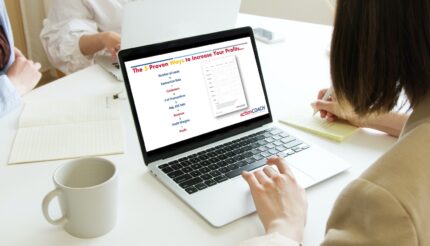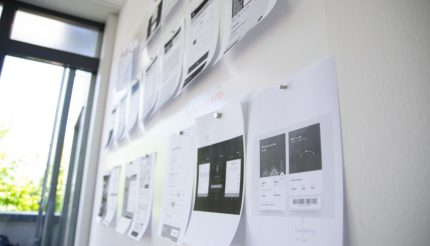For years, ActionCOACH founder Brad Sugars and his Business Coaches have taught business owners a “secret” but simple formula to hugely grow profits in any business. And we are about to share it with you!
Conventional business looks at sales from the standpoint of three things: sales, expenses and profits. This is defined by the formula Sales – Expenses = Profits. Each variable depends on the other, forcing businesses to look at either increasing sales or decreasing expenses in order to influence profitability.
We move away from this restricted view and break the sales variable into five separate components. Each of these can be worked on individually to leverage profits on the bottom line.
This is termed “The Five Ways” by the ActionCOACH business coaching model.
The five areas are:
- Lead Generation
- Conversion Rate
- Average (£) Sale
- Average Number of Transactions
- Profit Margins
These areas are highlighted in this equation:
Lead Generation x Conversion Rate = Average Number of Customers
Number of Customers x Average (£) Sale x Average Number of Transactions = Revenues
Revenues x Profit Margins = £ Profits
Taking a closer look into each of the five variables will reveal how an increase in any or all of them can result in increasing sales and profits, while keeping expenses constant.
Understanding lead generation, conversion rates and average (£) amounts
In today’s highly competitive business world, it’s vital for business owners to test and measure everything, and a good place to begin is lead generation. This is the total number of potential customers that have been in contact with the business in the last year; their leads.
A lot of people confuse responses and potential buyers with results – the sound of ringing phones is not the same as ringing tills! This is highlighted by conversion rate, or the percentage of people who did buy versus those who didn’t. For example, if 10 people came into a shop and only three people bought something, that day the shop had a conversion rate of 3 out of 10, or 30%.
The next part of the Five Ways is the number of customers, which is the number of people a business deals with. This is determined by multiplying the total number of leads by its conversion rate.
Are you with us so far?!
The average number of transactions is the number of purchases the average customer will make over a year. Keeping a database of past customers is helpful, as many business owners make the mistake of thinking “once a customer, always a customer”. The average number of transactions is closely related to the average sale of each purchase, which is also forecast over a year.
Discover revenues and working on margins
The next concept in the Five Ways model is revenue, which is worked out by multiplying the total number of customers by the number of times that they bought, multiplied by the average amount they spent.
This leads to the concept of margin, which is the profit percentage of each sale. For example, if a business sells something for £100, and £25 was their profit, then the profit margin is 25%.
The final step is taking the resulting revenue number and multiplying it by the company’s profit margin percentage to reach the bottom-line profit.
The great thing about the Five Ways formula is any business can leverage the concept even if they have a product or service with a long-term buying cycle or a limited number of transactions. In these cases, a business could work with the other variables to improve bottom-line profit, by improving their marketing efforts to get more qualified leads, finding ways to grow conversion to customers, increasing prices to leverage average (£) value or upgrading profit margins.
The next step
Now that you are familiar with our proven Five Ways formula, the next step is to get an understanding of how to improve your numbers in each of the variables. Contact me to find out more.






